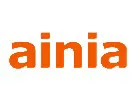AINIA is developing a mobile robotic platform capable of collecting fruit from the soil for a second use, thus reducing food waste, improving yields and investment in agricultural crops, while betting on sustainability.
The FOODCOLLECT project's goal is the creation of a collection robot that incorporates three main innovations: autonomous navigation, thanks to a mobile robotic platform; an arm for the collection, and an advanced vision system for the detection and location of the fruit.
Software and GPS for autonomous navigation in fields
The machine's autonomous navigation has various trajectory planners and global decision-making algorithms so that it is able to travel the field in search of fruits on the ground.
AINIA is developing software capable of generating optimal trajectories so the mobile platform can move between the plantations of the fruit trees and so that it can stop in its way to detect and locate the fruit on the soil. In addition, it includes an obstacle avoidance module and incorporates a GPS so producers can geolocate it at any time and know its exact position in the plantation.
Robotic arm adaptable to fruit picking
A collaborative robotic arm has been incorporated into the platform so it can pick the fruit from the ground and deposit it in the platform's built-in basket. In addition, researchers are working on a tailor-made claw design that will allow perfect adaptability to the fruit, making harvesting efficient and safe.
Algorithms that allow the robot to identify, classify, and locate the fruit
The machine's vision module is made up of a 2D and a 3D camera. The 2D camera allows it to identify the fruit, and analyze its color, texture, and condition. The 3D camera allows it to analyze the fruit's shape, size, and location on the ground.
Validated technology with oranges and kakis in the Valencian Community
The research project is aimed at the collection of oranges and kakis, two of the most important crops in the Valencian Community, that have fallen from the trees. "In the future, this technology is intended to be extended to any fruit that can be harvested from agricultural soil," stated Gabriele Kubiliute, technician of the line of advanced vision technologies of the Digital Transformation Unit of AINIA.
Giving waste a second life
Nearly 80 million tons of vegetables are wasted annually in Europe's primary production. 30 million tons of these are fruit, which is not marketed; and much of this waste is the fruit that falls to the ground and is not collected.
For more information:
AINIA
www.ainia.es
